Airbags have been credited with saving vast numbers of lives since they started to proliferate in cars in the late 1980s. The NHTSA calculated that more than 50,000 people in the US alone would have been killed between 1987 and 2017 if their cars didn’t have the technology, and globally they prevent around 70,000 deaths per year. While airbag-equipped riding gear is becoming more commonplace, the idea of motorcycle airbags has never managed to get a lot of traction.
Sure, you can buy a Honda Gold Wing with a car-style airbag, and have been able to since 2007, but as that innovation approaches its 18th anniversary it remains the only example of a bike-mounted airbag to reach showrooms. That’s not because it doesn’t work, but simply a reflection of how difficult it is to port a technology that’s been proven so well on four wheels into the two-wheeled realm.
Honda’s development of the airbag concept has continued behind the scenes, and in 2023 we reported on efforts by automotive safety equipment giant Autoliv to create a mass-market motorcycle airbag—a project that’s still underway. Now it appears that Yamaha is also tackling some of the problems that have hindered progress so far, filing a patent application for a sensor system to be used on motorcycles with airbags.
There are several sticking points when it comes to adopting airbags on bikes. The bags themselves need to be specially shaped and positioned to absorb impact from an unsecured rider, unlike car airbags that are designed with a seatbelt-wearing occupant in mind. They also need to react incredibly fast, as motorcycles don’t have the crumple zones of cars: The rider is closer to the point of impact, so crashes need to be detected more quickly and airbags need to inflate faster to be of use. And on top of all that a motorcycle is a much less predictable proposition than a car in the event of a crash: Pitch and yaw become as much of an issue as simple deceleration, making it more difficult for sensors to determine the direction of the impact and whether to trigger the airbag.
With those factors in mind, it’s not hard to see why the Gold Wing, with its low center of gravity, stable platform, and relatively rearward-seated rider, is the only airbag-equipped bike on the market.
Yamaha’s new patent application is specifically targeted at solving the sensor problems related to airbags on bikes. The system features two acceleration sensors, essentially similar to the inertial measurement units already commonplace on many modern bikes, able to monitor horizontal, lateral, and vertical acceleration. By putting one sensor in front of the bike’s center of gravity and the other behind the center of gravity, they can supply the information that the airbag computer needs to rapidly calculate whether the bike is involved in a crash and the direction of the impact.
When we spoke to Autoliv’s head of technology, mobile safety solutions, Atsushi Ishii, back in 2023, he explained that the biggest hurdle was the development of the algorithms needed to trigger an airbag fast enough on a motorcycle, and pointed out that sportbikes would be the hardest nut to crack because the riding position puts the rider’s head so close to the front. At the time, he said: “I think the trickiest ones are powersport motorcycles, the Yamaha R1 and things like that, because you’re basically sitting on the tank, or leaning toward the tank.” So it’s notable that the bike illustrated in Yamaha’s patent application is an R1—the very machine that Ishii picked as an example of the hardest type to apply the technology to.
The Yamaha patent also illustrates its three-wheeled Tricity scooter with an airbag, which is notable because it’s a machine that’s designed specifically to tempt car users onto bikes. The three-wheeled layout is part of that, adding extra stability, and an airbag could be a very useful additional measure to help coax new riders, potentially concerned about safety, away from cars. Autoliv’s prototype airbag also appeared on a three-wheeler, Piaggio’s MP3 (a direct rival to the Tricity), at shows in 2023.










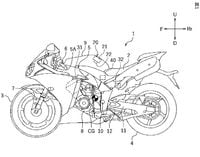
/cloudfront-us-east-1.images.arcpublishing.com/octane/DEYS3PHP65BPZIE4IAIZGBJZJU.jpg)
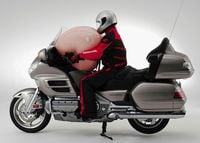
/cloudfront-us-east-1.images.arcpublishing.com/octane/3UZA7YD7LBBJDP64YIYTWEB34E.jpg)
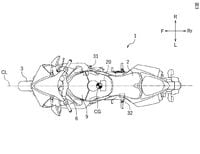
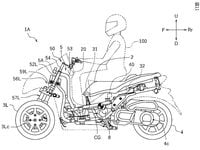
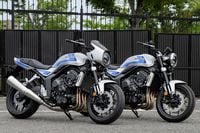

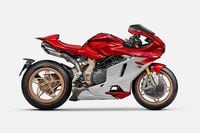
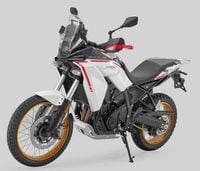


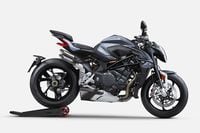
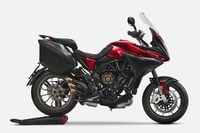
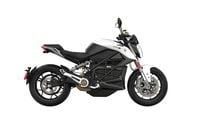
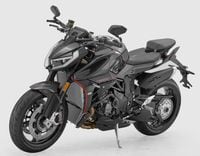




/cloudfront-us-east-1.images.arcpublishing.com/octane/URQMNYZZ6ZBM5LXGREBV3Y72OM.jpg)
/cloudfront-us-east-1.images.arcpublishing.com/octane/XH2ETEU4NVGDFNQO2XT2QQS5LU.jpg)
/cloudfront-us-east-1.images.arcpublishing.com/octane/DUGAQC2GQJCXFILEECQK2Q6T7I.jpg)
/cloudfront-us-east-1.images.arcpublishing.com/octane/4OGCCVR7WZGYDOWK4CGDTHXITA.jpg)
/cloudfront-us-east-1.images.arcpublishing.com/octane/GQV7Y6XT6FGZDIXO4P2IVJNSYE.jpg)
/cloudfront-us-east-1.images.arcpublishing.com/octane/X47GL62AXNALRHQLLBELY5WRMY.jpg)
/cloudfront-us-east-1.images.arcpublishing.com/octane/7OY2GP3FWFEDVEMDSLNGM6PZRM.jpg)
/cloudfront-us-east-1.images.arcpublishing.com/octane/Y3XYCFONBBBAHN6BWJDTWDY3FE.jpg)
/cloudfront-us-east-1.images.arcpublishing.com/octane/P3DLTISFGJA43L5QXVH7365UNY.jpg)
/cloudfront-us-east-1.images.arcpublishing.com/octane/H6FFG4YQMREO3DTADIJMECNS7Y.jpg)